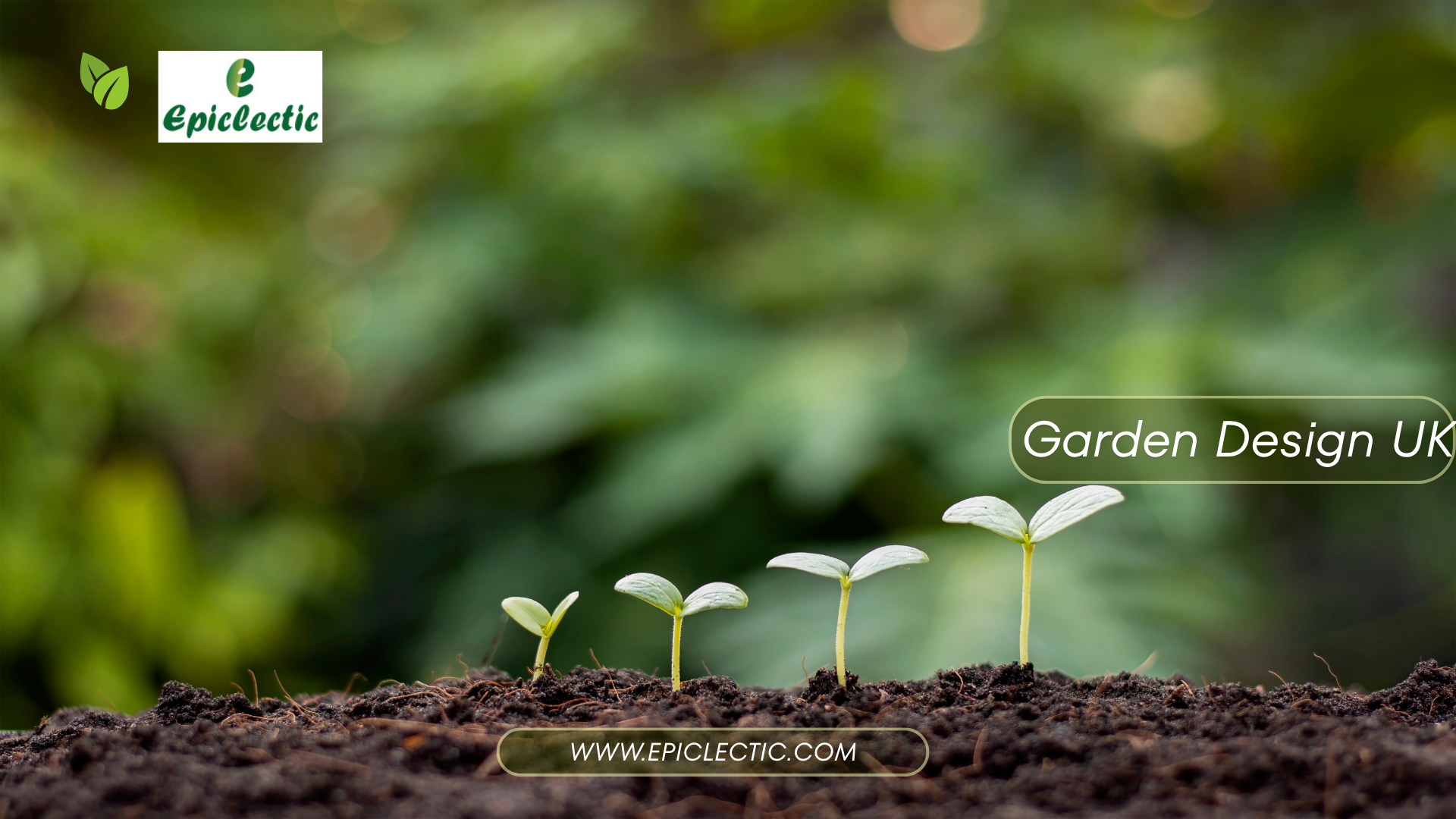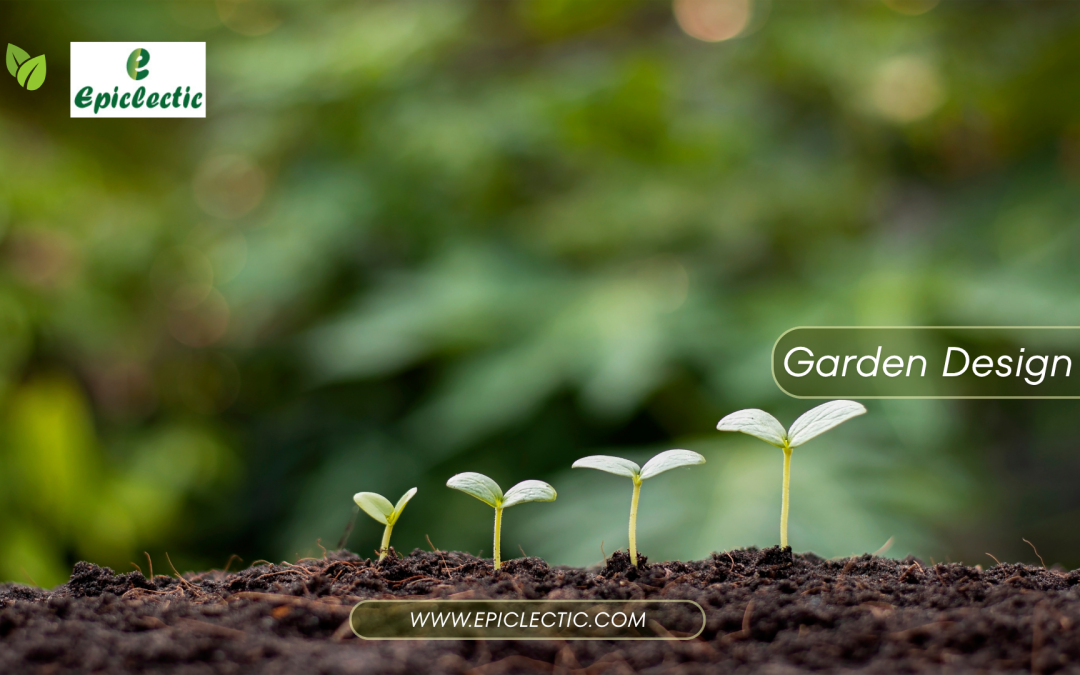Designing Your Perfect UK Garden — Start Here
You don’t need a huge lawn, a landscape architect, or a countryside view to have a stunning garden in the UK. Whether you’ve got a small patio in London or a generous plot in Yorkshire, good garden design is all about smart planning, creativity, and knowing what works best for your space and climate.
In the UK, where the weather can swing from downpour to sunshine in a single afternoon, designing a garden that’s both practical and beautiful can feel overwhelming — but it doesn’t have to be.
This guide is designed to walk you through each step with ease.From low-maintenance layouts and small space tricks to planting ideas and cost breakdowns, we’ll walk you through everything you need to create a garden you’ll love spending time in.
Excited to transform your outdoor area into something spectacular? Let’s dive in!

What’s the Best Way to Plan a Garden in the UK?
To design a garden in the UK, you need to consider your space, soil, climate, and how you want to use your garden — then build your layout around those needs.
Garden design isn’t just about plants and pretty borders. It’s about making your outdoor space work for you — whether you want a peaceful escape, a veggie-growing patch, or a place for BBQs and family time.
Start with these simple steps:
- Assess your garden space — size, shape, sunlight, and drainage matter.
- Decide how you’ll use it — relaxing, entertaining, growing food, or all three?
- Sketch out a basic plan — this doesn’t need to be professional!
- Consider the UK climate — choose plants that handle frost, rain, and variable sunlight.
- Balance hard and soft landscaping — paths, patios, lawns, and flowerbeds.
A north-facing garden in Manchester may need shade-tolerant plants, while a south-facing one in Brighton gets more light for Mediterranean-style designs.
What Are Some Top Garden Design Tips for Small Outdoor Spaces in the UK?
To make the most of a small garden in the UK, focus on clever layouts, vertical space, and multi-purpose features that maximise style and function.
Limited space doesn’t mean you have to sacrifice style or function. With some thoughtful planning and imagination, even the smallest garden can become a vibrant, practical, and charming retreat.
Top small garden design ideas that work brilliantly in the UK
One of the most effective tricks for small UK gardens is to go vertical. Think trellises, wall-mounted planters, or even a lush living wall — all of which free up ground space while adding depth and greenery. Zoning is another smart move. By breaking your garden into functional pockets — like a quiet seating nook, a small herb patch, or a strip for flowering plants — the space instantly feels more purposeful and organised.
Choosing light-colored paving materials can enhance natural light reflection, creating the illusion of a brighter and more open space, even in the tiniest areas.
Choosing foldable or built-in furniture is also a smart way to make the most of your layout, especially in narrow spaces or patios. Finally, adding mirrors or reflective garden panels can work wonders, visually doubling the size of your garden and adding a touch of elegance in the process.
In a narrow London courtyard, placing a bench against the wall with vertical planters above can create a cosy reading nook without wasting any space.
Low Maintenance Garden Design UK: What Really Works?
The easiest way to create a low maintenance garden in the UK is to choose durable materials, hardy plants, and a layout that needs minimal upkeep.
Not everyone has the time (or energy) to prune, weed, and water every weekend — and that’s perfectly okay. By making smart selections, you can enjoy a beautiful garden throughout the year without needing to put in much work.
Simple ideas that really work in UK gardens:
- Swap lawns for gravel or paving – no mowing, no mud, no fuss.
- Use evergreen shrubs and hardy perennials – they survive all seasons and need minimal care.
- Mulch your flower beds – it suppresses weeds and locks in moisture.
- Install automatic watering systems – helpful for dry spells or holidays.
- Choose native UK plants – they’re already adapted to our weather and thrive with little help.
A gravel patio with a few raised beds of lavender, boxwood, and heather can look lovely while needing barely any maintenance.
With thoughtful planning, your garden can be more relaxing — and less of a chore.
Garden Design Cost UK: What Should You Expect to Pay?
The cost of garden design in the UK varies widely, but most homeowners can expect to pay anywhere from £500 to £15,000 depending on size, style, and services.
If you’re just after a basic design plan, a professional garden designer might charge from £500 to £1,500. This usually includes a layout drawing, planting ideas, and material suggestions. However, if you’re looking for a full garden transformation — think paving, lighting, fencing, and planting — the price can rise to £5,000–£15,000+ depending on how large and complex your garden is.
Factors that influence garden design costs:
- Garden size and shape
- Materials used (stone, wood, artificial turf)
- Level of customisation and features
- Whether you DIY, hire a designer, or work with a landscaping firm
A small London courtyard makeover with new tiles, lighting, and pots might cost around £3,000, while a larger rural garden redesign could run over £10,000.
Always ask for a clear quote, and if possible, get 2–3 comparisons before committing.

Should You Design Your Garden Yourself or Hire a Garden Designer?
You can design your own garden if you enjoy planning and hands-on projects, but hiring a garden designer brings professional insight, creativity, and time-saving benefits.
DIY garden design can be a rewarding and budget-friendly approach, especially for small spaces or simple updates. With free online tools, plant guides, and some trial and error, many homeowners create beautiful gardens on their own.
However, if you want a cohesive, professionally finished space or have a tricky site (like sloped ground or poor drainage), hiring a designer can make a big difference.
Here’s a quick comparison:
- DIY Pros: Budget-friendly, personal touch, flexible timeline
- DIY Cons: Time-consuming, risk of design mistakes
- Designer Pros: Expert planning, access to trade suppliers, tailored designs
- Designer Cons: Higher upfront cost
If you just want a tidy patio with planters, go DIY. But if you’re reworking levels, lighting, and planting zones — a designer is worth it.
Which Garden Design Trends Will Shape the UK in 2025?
The top garden design trends for 2025 in the UK focus on sustainability, creating outdoor living spaces, and embracing natural, wildlife-friendly environments.
Garden design is evolving to meet both aesthetic and environmental needs. In 2025, many UK gardeners are prioritising eco-friendly choices alongside comfort and style.
Here are the biggest trends shaping UK gardens this year:
Sustainable gardening: Using rainwater harvesting, composting, and drought-resistant native plants to reduce water and chemical use.
Outdoor living spaces: Designing “garden rooms” with comfortable seating, lighting, and even outdoor kitchens or offices to extend living areas.
Wildlife-friendly gardens: Incorporating pollinator-friendly plants, wildflower patches, and natural habitats for bees, birds, and butterflies.
No-mow lawns and wild meadows: Reducing lawn size or replacing with native grasslands to encourage biodiversity and reduce upkeep.
Natural materials and textures: Using wood, stone, and recycled materials for decking, paths, and furniture for a timeless, earthy feel.
Vertical gardens and living walls are ideal for city environments, bringing lush greenery without occupying valuable floor area.
Smart garden tech: From app-controlled irrigation to solar lighting, technology is becoming more common to help maintain gardens efficiently.
A Hampshire homeowner replaced a large lawn with a wildflower meadow, attracting butterflies and reducing water use while creating a vibrant natural look.
UK garden design in 2025 blends beauty with purpose, helping gardeners create spaces that are both stunning and sustainable.
What Are the Most Suitable Plants for UK Garden Designs?
The best plants for UK gardens are those that thrive in local weather, need little maintenance, and add year-round interest — including hardy shrubs, perennials, and native species.
When choosing plants for your garden, it’s smart to go for ones that don’t just look great, but also cope well with the UK’s unpredictable climate. That means picking plants that can handle rain, occasional frost, and short summers without needing too much fuss.
Great plant choices for UK garden designs include:
Lavender – drought-tolerant, pollinator-friendly, and smells amazing.
Boxwood (Buxus) – ideal for structure, topiary, and evergreen edging.
Hydrangeas – love British soil and bring big, bold colour all summer.
Heuchera – offers colourful foliage, great in beds or containers.
Ferns – perfect for shady spots and woodland-style borders.
Roses – a timeless classic that fits cottage and formal gardens alike.
Sedum and other succulents – good for dry areas and modern styles.
Herbs (like rosemary, thyme, chives) – beautiful, fragrant, and useful in the kitchen.
If you’re designing a low-maintenance garden, pair evergreen shrubs like boxwood with perennials like lavender and hardy ornamental grasses. This mix gives structure, scent, and colour — with very little upkeep.
The key is to combine reliable performers with seasonal bursts of colour to keep your garden looking alive all year round — even when it’s raining in April or frosty in November.
How to Start a Garden Design Plan from Scratch (UK Guide)
To design a garden from scratch in the UK, begin by assessing your space, identifying your goals, and creating a layout that balances style, function, and climate needs.
Beginning with an empty space can feel overwhelming, but with some thoughtful preparation, it’s more manageable than you might expect.Whether your garden is a bare patch of lawn or a neglected patio, the process starts with observation and imagination.
Follow these simple steps to begin your garden design journey:
Measure and map your space: Draw a basic sketch of your garden, noting size, shape, sun exposure, and existing features like sheds or trees.
Think about how you’ll use the garden: Will it be a social area, a kids’ play zone, a veg plot, or a quiet space to unwind?
Choose a style or theme: Modern, cottage, wild, or Mediterranean — your style sets the mood.
Divide the space into zones: Create visual balance with paths, patios, lawns, or planting beds.
Plan for practicality: Think about drainage, privacy, access, and maintenance needs.
Use digital garden planners or graph paper: Free tools like BBC Garden Planner or RHS MyGarden can help you visualise ideas.
A small rectangular garden could be split into three parts — a paved dining area, a raised flower border, and a tucked-away corner with a bench under a pergola.
Your initial plan doesn’t have to be flawless — it simply serves as a foundation to build upon.As the seasons change and you use the garden more, your ideas will evolve too.
Your initial plan doesn’t have to be flawless — it simply serves as a foundation to build upon.As the seasons change and you use the garden more, your ideas will evolve too.
FAQ: Common Questions About Garden Design in the UK
Here are some of the most frequently asked questions from homeowners and garden lovers across the UK — with clear, simple answers to help you move forward with confidence.
- How can you create a garden in the UK on a tight budget?
DIY garden design using recycled materials, second-hand furniture, and low-cost plants is often the most affordable option.
You can save a lot by sketching your own layout, using free online design tools, and shopping at local plant sales or community garden centres. Repurposing old bricks, pots, or pallets is another smart way to keep costs low while adding charm.
- Can I design my garden in winter?
Yes, winter is a great time to plan your garden layout and get ready for spring.
While planting is limited due to cold soil, winter is ideal for planning, sketching, sourcing materials, and booking contractors before peak season. It’s also a good time to evaluate your garden’s structure — especially how it drains or handles shade.
- How long does a garden redesign usually take?
In the UK, a complete garden makeover can range from a few weeks to several months, depending on how complex the project is and the weather conditions.
Simple updates like replanting or adding gravel paths might take a weekend. Larger makeovers involving paving, fencing, or structural changes often take 4–8 weeks, with some seasonal delays possible.
4.Is planning permission required for a garden redesign?
Generally, most garden renovations in the UK don’t require planning permission, although certain cases may have specific exceptions.
You may need approval if your design includes raised decking, large outbuildings, boundary changes, or major structural features. If your home is a listed building or located within a conservation area, be sure to consult your local planning authority before making any changes.
- Is artificial grass a good option for UK gardens?
Artificial grass can reduce maintenance, but it’s not always the most eco-friendly or long-lasting solution.
It works well in shaded areas or where real turf struggles, but it can trap heat, impact drainage, and limit biodiversity. Many gardeners now prefer low-maintenance alternatives like gravel, meadow grass, or moss lawns for a more sustainable feel.
- What is a reasonable budget for redesigning a small garden?
For a small UK garden, budget between £1,000 and £5,000 depending on features, materials, and whether you hire help.
Costs can be lower with DIY, especially if you reuse existing elements. Adding things like decking, lighting, or raised beds will increase the price — but also the value and usability of your space.
Always start your garden design with a plan — even a rough sketch. It saves time, avoids costly mistakes, and helps bring your vision to life step-by-step.
Final Thoughts: Your Next Steps to a Beautiful UK Garden
To create your ideal UK garden, start small, plan with intention, and build your design around how you want to use the space.
Whether you’re dreaming of wildflowers, a modern patio, or a calm spot to read, the most successful gardens start with a clear purpose and grow over time.
Here’s what to do next:
- Sketch a simple plan: Use pen and paper or a free online garden planner.
- Choose your priorities: Do you want easy maintenance, more colour, or space to entertain?
- Pick a style that suits your home: Modern, traditional, cottage, or minimal.
- Start with structure: Define paths, borders, and focal points before planting.
- Approach your project step by step, focusing on one section at a time—this is especially helpful if you’re working with limited funds.
Even the most stunning gardens didn’t grow overnight. Let your space evolve with the seasons and your lifestyle.
If you’re unsure where to start, get advice from a local designer or horticulturist — or simply begin by planting what you love and adjusting as you go.
Your content goes here. Edit or remove this text inline or in the module Content settings. You can also style every aspect of this content in the module Design settings and even apply custom CSS to this text in the module Advanced settings.




